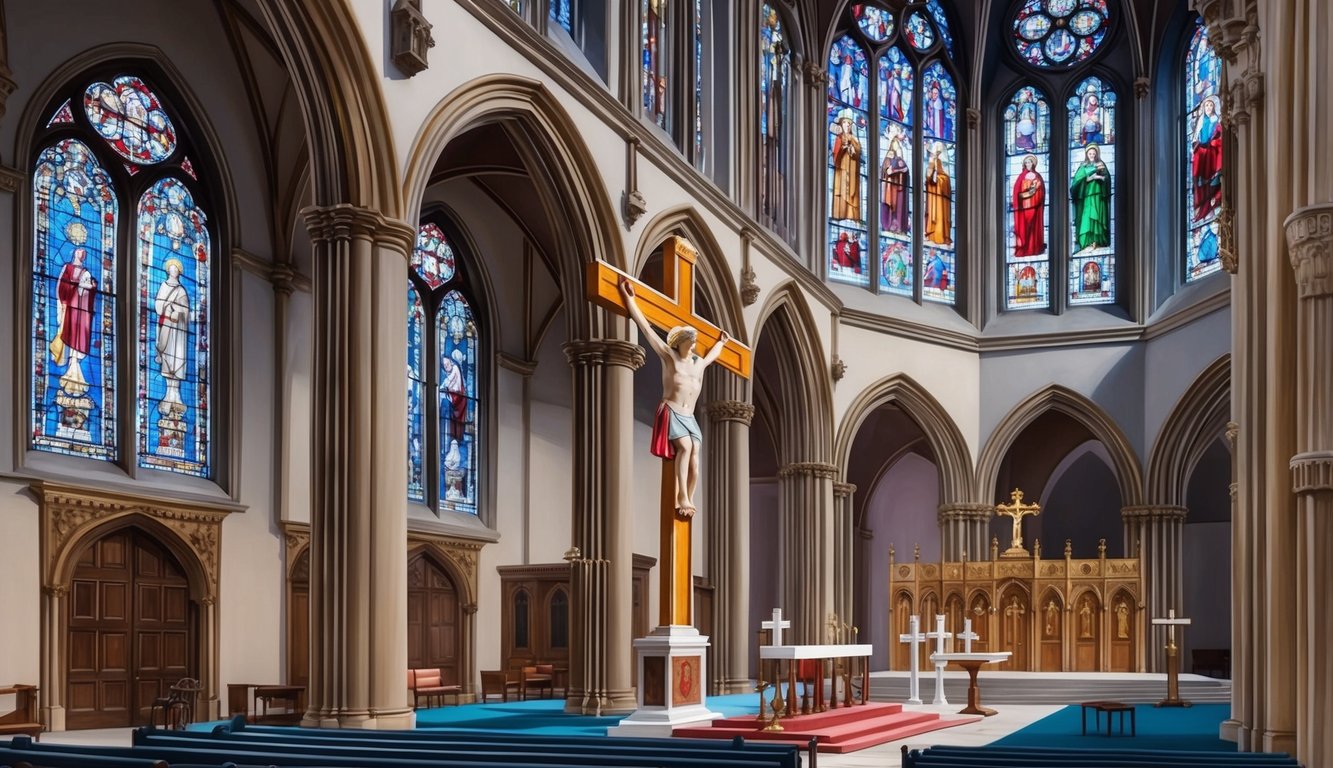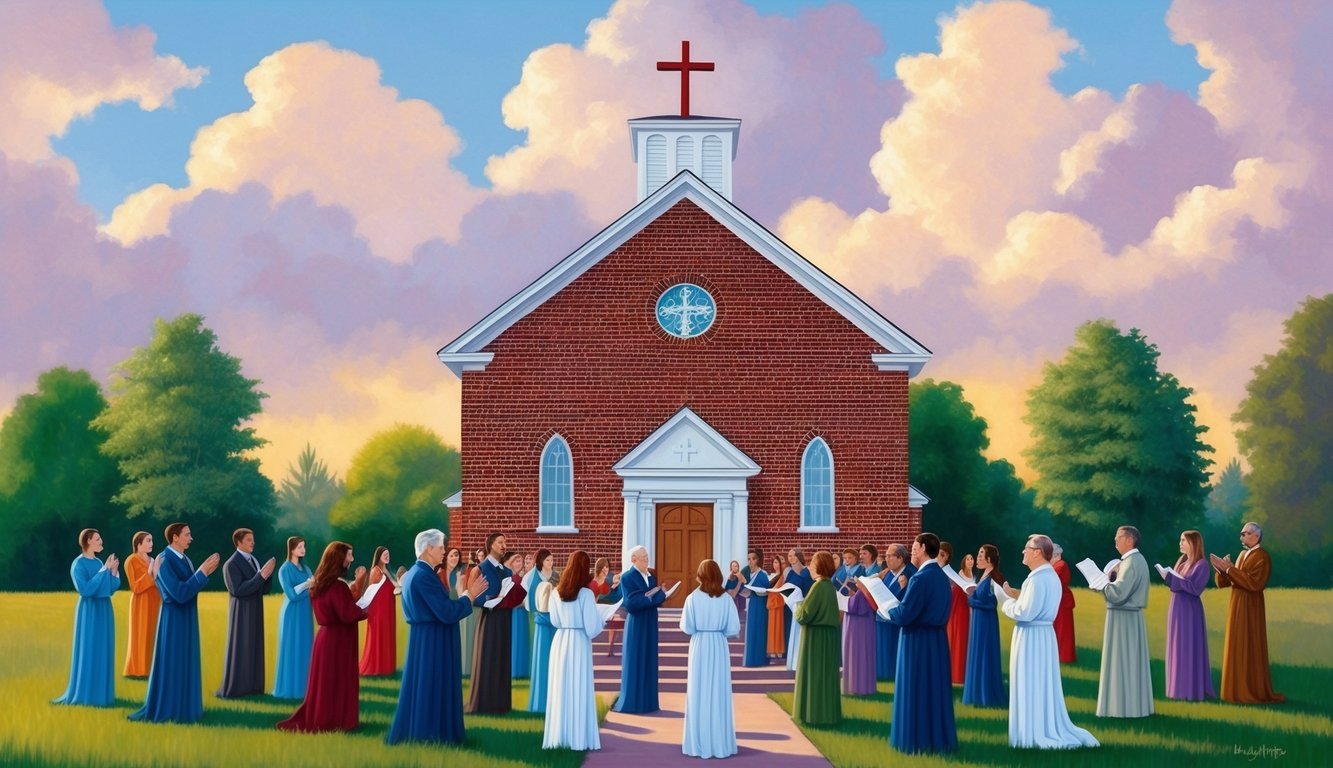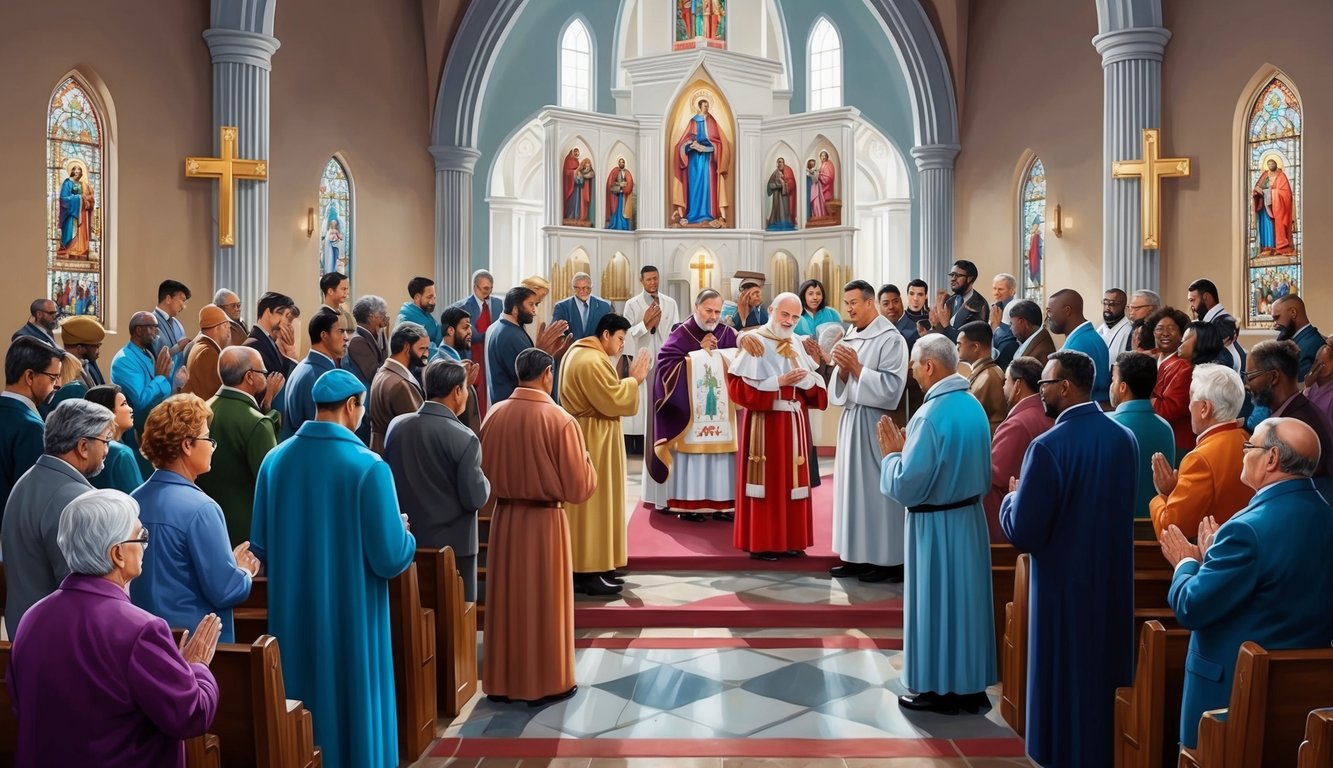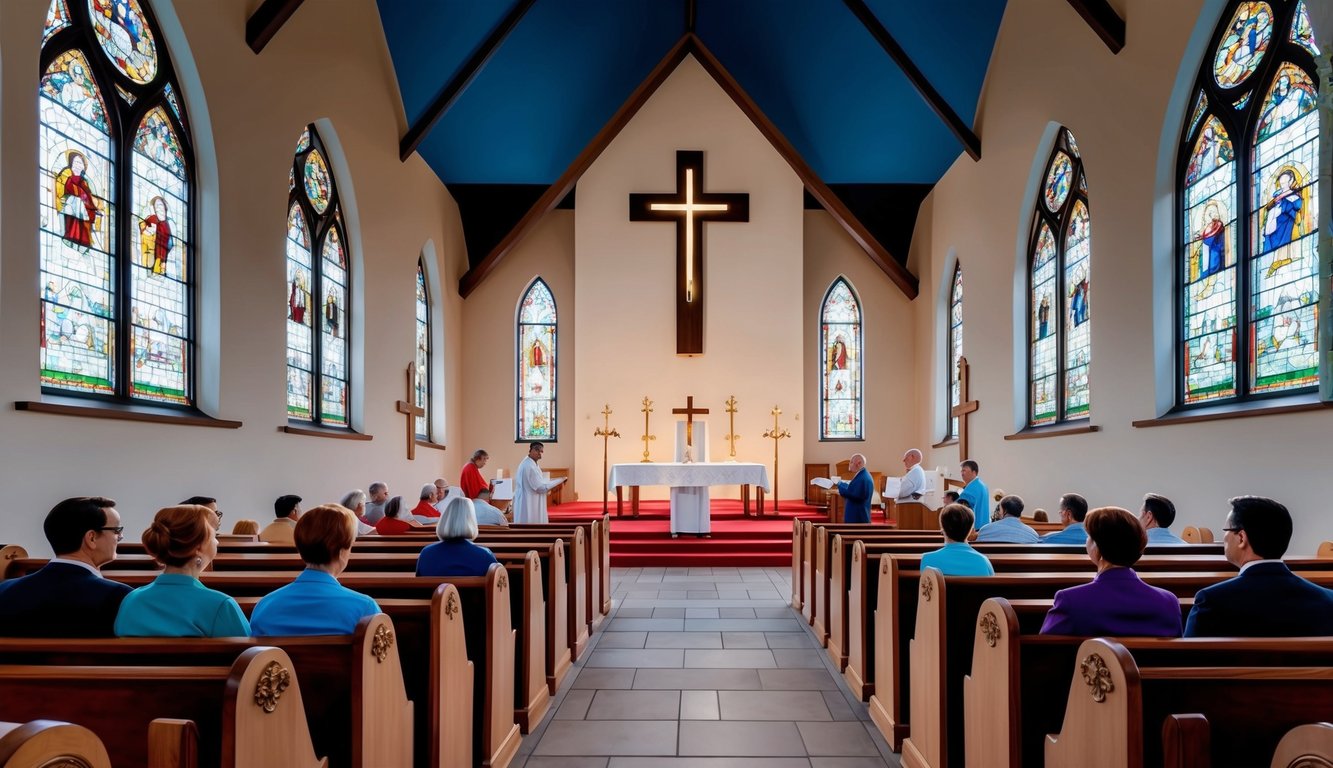Don’t Miss Out On This Unique Astrological Opportunity
Are you tired of spinning your wheels and getting nowhere? Simply put, you’re out of sync: you’re out of alignment with your astral configuration.
But: there’s a kind of map that can help you reclaim your alignment. Think of it as your own personal blueprint to success and happiness: a blueprint that will help you live your most amazing life.
Get started here.
Many people wonder if Catholics are truly Christian, and it’s a question that might surprise some. Yes, Catholics are Christians, and they belong to the largest Christian denomination.
The Catholic Church traces its roots back to the early days of Christianity, emphasizing a long and rich history.
This long-standing tradition has given rise to diverse practices and expressions of faith, which contribute to Catholicism’s unique identity.
Understanding the differences and similarities between Catholics and other Christian groups can deepen your appreciation of these traditions.
Catholics share core Christian beliefs, such as faith in Jesus Christ, the Holy Trinity, and the resurrection, but they also have unique theological distinctions.
These include the importance of the sacraments, the authority of the Pope, and specific teachings on issues like the veneration of saints and the Virgin Mary.
Exploring the diversity within Catholicism can reveal the vibrant tapestry of cultures and traditions that exist within the church.
From traditional Latin masses to contemporary services, Catholic expression varies widely across the globe.
This diversity showcases the adaptability and inclusivity of Catholicism, making it a global faith that still holds its fundamental Christian identity.
Key Takeaways
- Catholics are Christians and belong to the largest Christian denomination.
- Catholics share core beliefs with other Christians but have unique theological distinctions.
- Catholicism is diverse in its practices and cultural expressions.
Historical Context and Foundations

Catholicism traces its roots back to the early Christian Church.
Understanding its development involves examining its origins and key figures.
This will provide insight into how it formed as a branch of Christianity.
Origins of Catholicism
The Catholic Church began in the Province of Judea.
Its early followers were the Apostles, who spread the teachings of Jesus Christ.
Among them, St. Peter is often considered a key figure.
Traditionally, he is regarded as the first Pope, founding a leadership line that continued through the centuries.
The Nicene Creed, established in AD 325, helped define Christian beliefs.
It clarified the doctrine among various branches of Christianity.
Over time, the Eastern Orthodox Church split from the Roman Catholic Church, marking one of the early significant divisions.
This led to different traditions and practices within the Christian faith.
Key Figures and Early Development
Many influential figures shaped the Catholic Church. St. Peter, as a foundational leader, is vital in the history of the Papacy.
His role set the stage for a centralized church structure that still influences the church today.
In the 16th century, figures like Martin Luther and John Calvin sparked the Protestant Reformation.
They challenged the Catholic Church’s authority and practices, leading to the rise of Protestantism, which further diversified Christianity.
In modern times, leaders like Pope Francis and the Second Vatican Council have continued to shape the Church.
They have worked on reforms and dialogues with other branches of Christianity.
These efforts aim at maintaining relevance and unity within the global Christian community.
Beliefs and Theological Distinctions

Catholics hold certain beliefs and practices that distinguish them from other Christian denominations.
These differences often revolve around sacraments, the authority of the Pope, and interpretations of sacred tradition and scripture.
Key Tenets of Catholic Faith
The Catholic Church emphasizes sacred tradition alongside sacred scripture as pillars of faith.
This means that the Church’s practices and beliefs are rooted in both written texts and longstanding traditions.
The authority of the Pope is a central element, signifying papal supremacy as the leader of the global Catholic community.
The catechism of the Catholic Church provides guidance on faith, specifically focusing on the divine role of the Virgin Mary, the Lord Jesus Christ, and the nature of salvation and forgiveness.
Comparison with Other Christian Denominations
Catholicism distinguishes itself in several ways from other Christian denominations such as Protestantism and Eastern Orthodoxy.
One major difference is the authority of the Pope, where Catholics believe in papal supremacy, which is not accepted by other groups.
Catholics also hold a unique view on the transubstantiation that occurs in the Eucharist, believing the bread and wine become the actual body and blood of Christ.
These distinct theological perspectives shape Catholic worship and its understanding of sacraments like baptism and confirmation.
Role and Significance of the Sacraments
The Seven Sacraments are central to Catholic life and practice.
These include baptism, confirmation, Eucharist, reconciliation, anointing of the sick, Holy Orders, and matrimony.
Each sacrament serves as a visible sign of grace and is integral to living a Christian life.
For example, the Eucharist holds a special place as it symbolizes unity with Christ.
Participation in these sacraments is essential for spiritual growth, facilitating forgiveness of sins and a deeper connection with faith in Christ through rituals and prayer, such as the Rosary.
This focus underscores the importance of the sacraments in understanding Catholicism’s theological distinctions.
Practices and Expressions of Faith

Catholic practices and expressions of faith shape both personal and community experiences.
These traditions connect believers to historical and spiritual roots while also influencing their daily lives.
Catholic rituals such as the sacraments, prayer, and participation in Mass reinforce a sense of belonging and devotion.
Central to Catholic belief is the question, is Jesus God, which is affirmed through doctrines like the Trinity and the Incarnation.
These teachings guide moral decisions, strengthen faith, and deepen the relationship between believers and the divine.
Mass and Liturgical Observances
The Mass is central to Catholic worship and includes rituals and readings from the Holy Bible.
It commemorates the Last Supper and enables you to partake in the Eucharist, believed to be the body and blood of Christ.
The liturgy includes hymns, prayer, and the Gospel reading, providing a structure for communal worship.
Confession is also a key practice, where individuals seek forgiveness for sins.
This sacrament underscores the belief in Purgatory and the importance of repentance.
Participation in Mass reflects your commitment to the Christian tradition and offers a chance to connect with the broader Catholic community.
Cultural and Social Impact of Catholic Traditions
Catholic traditions deeply influence cultural and social aspects of life.
The celebration of sacraments like marriage underlines the importance of family and community.
Such events often involve significant rituals and gatherings that bring people together.
Traditions also shape views on sexuality and clerical marriage, which reflect longstanding Christian ethics and teachings by the Church.
The Catholic Church’s global presence means these traditions often intertwine with local cultural practices, creating a unique blend that is both universal and particular to each community.
These expressions of faith are significant cultural markers that also serve as opportunities for evangelization and witness to Catholic beliefs.
Personal Devotions and Community Life
In addition to formal worship, personal devotions play a key role in Catholic life.
You might engage in prayer, study of the Scriptures, or say the Rosary to deepen your spiritual experience.
Saints serve as role models, guiding faith practice through examples of holy living and piety.
Community life is enriched by church groups and gatherings that promote fellowship and support.
Involvement in these activities helps strengthen your faith and commitment to the Catholic community.
This network of personal and communal practices fosters a sense of belonging and encourages active participation in the Church’s mission and teachings.
Diversity Within Catholicism

Catholicism is marked by a rich variety of cultural, theological, and liturgical traditions.
These differences are shaped by cultural influences, regional practices, and historical developments.
Major Branches and Movements
Roman Catholicism is the largest group within Christianity, characterized by its extensive history and widespread influence.
It has various rites, including the Latin and Eastern rites, which show cultural and liturgical diversity.
In addition, there are movements like Liberation Theology in Latin America that focus on social justice and economic disparities.
While Protestants, Baptists, Orthodox, and Mormons differ in their doctrines and practices, Catholicism also addresses diverse theological debates within its teachings.
For instance, discussions on issues like healing, faith, and the role of clergy and laity highlight how diversity can enrich a faith tradition.
Contemporary Issues and Perspectives
Today, Catholicism faces contemporary challenges, as it navigates cultural and social changes.
There is ongoing dialogue about the role of men and women in the church, addressing gender equality and ordination.
The Catholic population is growing in regions like Africa and Asia, leading to new cultural expressions of faith.
Within moral theology, issues about sexual diversity are particularly significant, influenced by different ethical viewpoints.
These discussions often relate to interpretations of faith in Jesus Christ, particularly in relation to modern ethical dilemmas.
By engaging in these dialogues, Catholicism demonstrates its capacity to evolve while remaining anchored in its core beliefs about the death and resurrection of Jesus.
Frequently Asked Questions
Understanding the relationship between Catholicism and other Christian denominations can be complex.
This section addresses key questions to help clarify Catholic beliefs and their place within the broader Christian context.
What are the main differences between Catholicism and other Christian denominations?
Catholicism places a strong emphasis on the sacraments and the authority of the Pope, which distinguishes it from many other denominations.
The Catholic Church also holds specific views on doctrines like transubstantiation, where bread and wine become the body and blood of Christ during Communion.
Do Catholics consider themselves to be Christians?
Yes, Catholics do consider themselves Christians.
Catholicism is the largest Christian denomination and shares fundamental beliefs such as the divinity of Jesus and the resurrection.
The Nicene Creed, recited in Catholic Mass, is a profession of these shared beliefs.
What are the fundamental beliefs that distinguish Catholics from Protestants?
While both Catholics and Protestants believe in the Trinity and salvation through Jesus, Catholics uphold the authority of the Pope and tradition alongside the Bible.
Protestants often emphasize individual interpretation of the Bible and may reject certain Catholic traditions and teachings.
How does the Catholic understanding of the Bible differ from other Christian denominations?
Catholics accept the Bible as the inspired word of God but include seven additional books, called the Deuterocanonical books, not found in Protestant Bibles.
The Church also relies on Sacred Tradition and the teaching authority, or Magisterium, to interpret the Scriptures.
What is the historical context of the split between Catholicism and other forms of Christianity?
The split, known as the Reformation, occurred in the 16th century.
Disputes over issues like Church authority and practices, including the selling of indulgences, drove this split.
Key figures like Martin Luther pushed for reforms that led to the establishment of Protestant denominations.
In what ways do Catholic teachings conform to the wider Christian definition of belief in Jesus as God?
Catholics share core Christian beliefs, including the divinity of Jesus, his role as Savior, and his resurrection.
These form the foundation of their faith and align with the universal Christian definition of believing in Jesus as fully divine and fully human.



